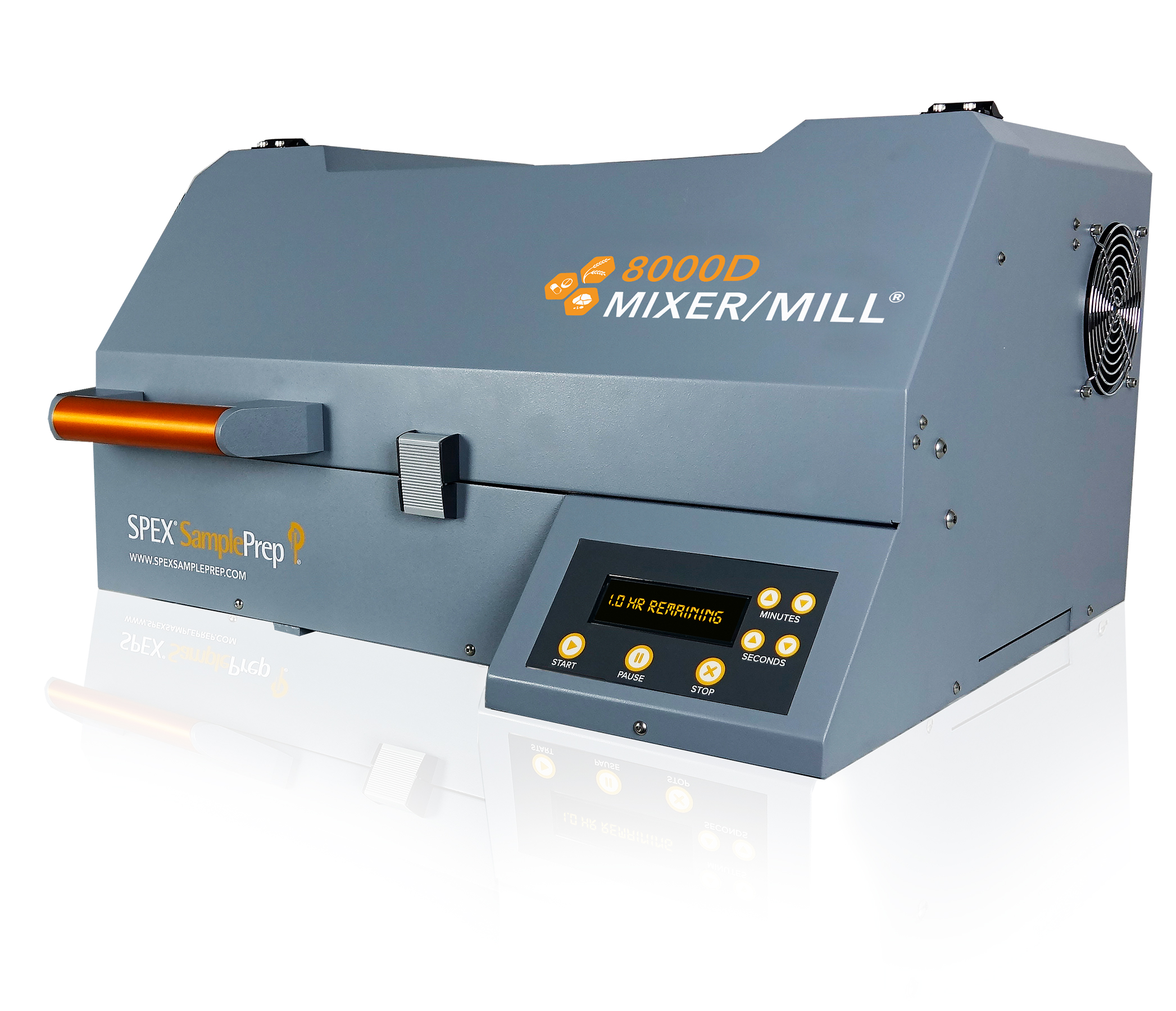SPEX 8000D Dual-Vial Ball Mill + VAC-ATM Genesis Glovebox
Description:
Mix, mill, and mechanically alloy powders with high-energy rotation in argon atmosphere
Features:
- 1060 cycles/min figure-8 motion
- Hardened steel or tungsten carbide vials and media
- 3-10 mL grinding load or 25 mL mixing load (0.5-1.5 / 3mL for WC vials)
- Extended run-time addon for up to 24-hour milling time. Enables mechanical alloying
- <50 micron particle size with slurry grinding
- Glovebox with sample load lock
- Purifier assemblies maintain oxygen and moisture <1ppm
UC Rate: $10/hour
External (Non-UC) Rate: $12/hour
Summary of Equipment
Synthesis of many innovative materials requires ultra-fine powder as an input for processes such as sintering or induction melting. The SPEX mixer/mill is operated in a VAC-ATM glovebox to allow mixing, milling, or mechanical alloying without risk of oxidation.
Ink casting and 3D-extrusion printing of the thermoelectric half-Heusler alloy Nb1-xCoSb
These researchers first utilized the SPEX 8000D to prealloy Nb, Co, and Sb in steel vials with no milling media. After cold-pressing and annealing the mixed powder, the sample was ground in Ar atmosphere for five hours, and the resulting powder was sieved to yield powders <38μm, considered suitable for extrusion printing. The ultimate goal was to build lattices with ∼600 μm struts using this technique with the half-Heusler alloy Nb1-xCoSb. This method was shown to be an excellent route for flexible production of parts using this material, which has desirable thermoelectric peroperties.

Muath M. Al Malki et al. Ink casting and 3D-extrusion printing of the thermoelectric half-Heusler alloy Nb1-xCoSb, Additive Manufacturing Letters, Volume 4, 2023, 100113
Electronic, Thermal, and Thermoelectric Transport Properties of ReSe2 and Re2Te5
ReSe2 and Re2Te5 are studied as representative compounds of chalcogenides, which are known to have desirable electronic and thermoelectric transport properties. Following a solid-state reaction process of powder components in a vacuum-sealed quartz tube, the researchers pulverized samples of ReSe2 and Re2Te5 using a SPEX 8000D in argon atmosphere. After forming bulk specimens of these compounds with a spark plasma sintering process, the group was able to systematically study various properties of the materials using XRD, DSC, and several computational models.
Joonho Bang et al. Electronic, Thermal, and Thermoelectric Transport Properties of ReSe2 and Re2Te5, International Journal of Energy Research, vol. 2023, Article ID 2831961, 10 pages, 2023. https://doi.org/10.1155/2023/2831961
Exceptional Strain-Hardening Capacity of a Medium-Entropy Alloy CoCrNi With Grain-Size Gradient Structure
It has been demonstrated that producing CoCrNi HEAs with heterogeneous grain structures may be advantageous in overcoming the tradeoff between the high strength or high ductility of this material. The group was able to demonstrate advantageous mechanical properties of surface mechanical attrition-treated CoCrNi vs. a fine-grained CoCrNi sample resulting from SPS. To produce these samples, high-purity powders of each metallic component were milled for 15 hours in a SPEX 8000D within an argon environment.

Wei, P. et al. Exceptional Strain-Hardening Capacity of a Medium-Entropy Alloy CoCrNi With Grain-Size Gradient Structure. Metall Mater Trans A 54, 1332–1341 (2023).



